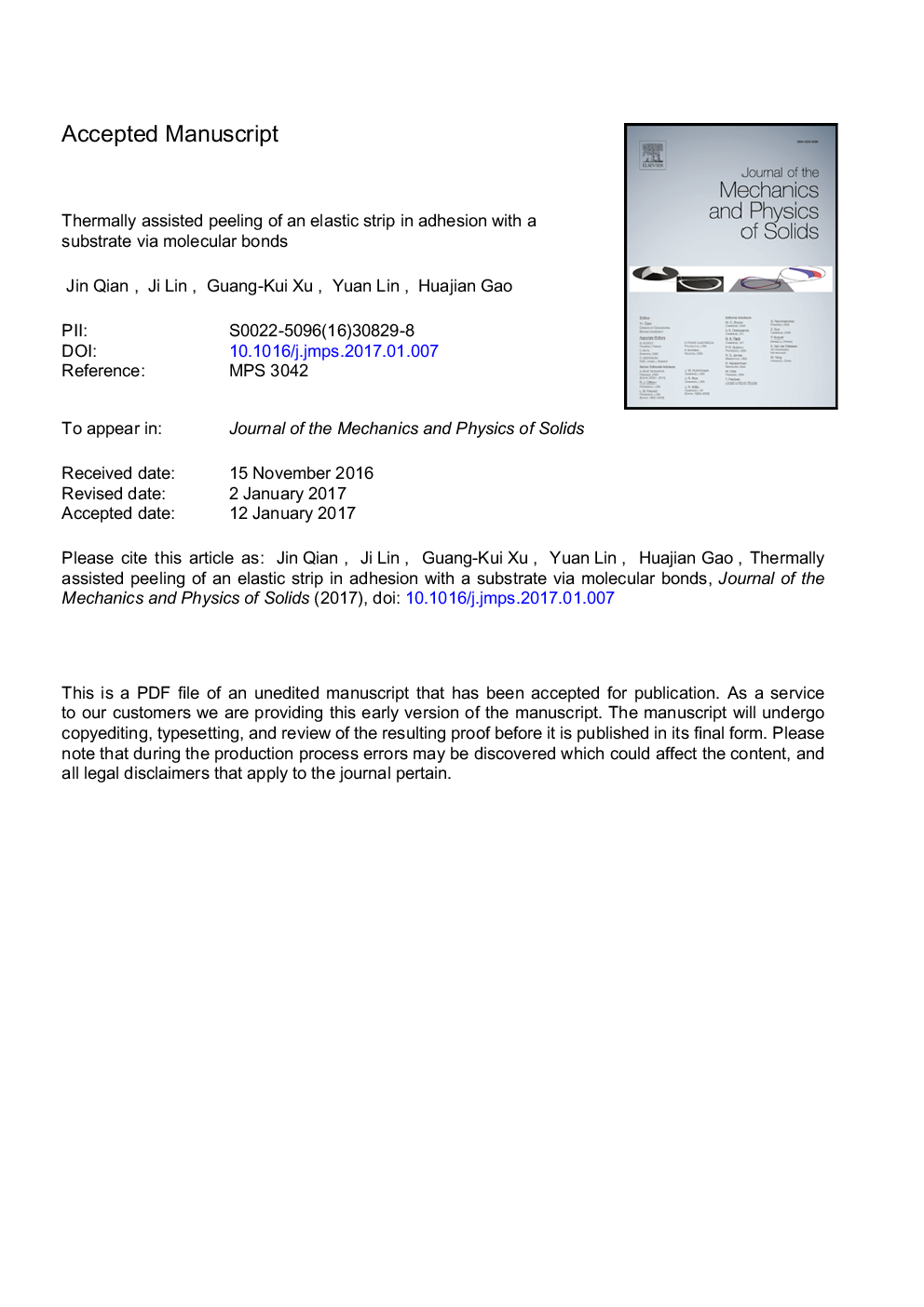| Article ID | Journal | Published Year | Pages | File Type |
|---|---|---|---|---|
| 5018208 | Journal of the Mechanics and Physics of Solids | 2017 | 31 Pages |
Abstract
A statistical model is proposed to describe the peeling of an elastic strip in adhesion with a flat substrate via an array of non-covalent molecular bonds. Under an imposed tensile peeling force, the interfacial bonds undergo diffusion-type transition in their bonding state, a process governed by a set of probabilistic equations coupled to the stretching, bending and shearing of the elastic strip. Because of the low characteristic energy scale associated with molecular bonding, thermal excitations are found to play an important role in assisting the escape of individual molecular bonds from their bonding energy well, leading to propagation of the peeling front well below the threshold peel-off force predicted by the classical theories. Our study establishes a link between the deformation of the strip and the spatiotemporal evolution of interfacial bonds, and delineates how factors like the peeling force, bending rigidity of the strip and binding energy of bonds influence the resultant peeling velocity and dimensions of the process zone. In terms of the apparent adhesion strength and dissipated energy, the bond-mediated interface is found to resist peeling in a strongly rate-dependent manner.
Related Topics
Physical Sciences and Engineering
Engineering
Mechanical Engineering
Authors
Qian Jin, Lin Ji, Xu Guang-Kui, Lin Yuan, Gao Huajian,
